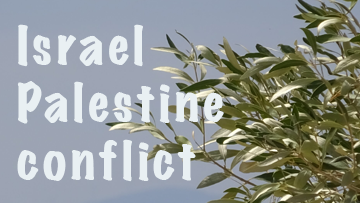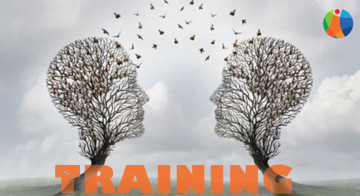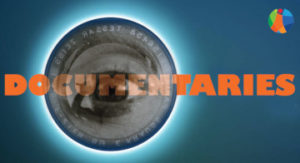*By Sérgio de Mello*
According to the organizers, the participants are expected to engage in an open and action-oriented debate on key topics related to sustainable development. There will be no participation of Governments or UN agencies. The recommendations emanating from the Dialogues will be conveyed directly to the Heads of State and Government present at the Summit.
Ten topics will be debated, based on their relevance to the furthering of sustainable development: 1 – Sustainable development for fighting poverty; 2 – Sustainable development as an answer to the economic and financial crises; 3 – Unemployment, decent work and migrations; 4 – The economics of sustainable development, including sustainable patterns of production and consumption; 5 – Forests; 6 – Food and nutrition security; 7 – Sustainable energy for all; 8 – Water; 9 – Sustainable cities and innovation; and 10 – Oceans.
The debates will be broadcast live through the UN website.
With the support of the United Nations Development Program (UNDP), the Dialogues initiative is being launched through a digital platform (https://www.riodialogues.org/) in order to provide the wide public with a democratic space for discussion.
The on-line debates on each of the ten themes of the Dialogues will be facilitated by researchers from renowned academic institutions around the world. The platform is available in four languages (Portuguese, English, French and Spanish), with an in-built tool that allows the translation of specific posts into 40 languages. It also includes a voting system through which a set of recommendations will be chosen for transmission to the participants of the Dialogues, in Rio.
This innovative bridge between civil society and Heads of State and Government is expected to contribute to the incorporation and engagement of stakeholders, based on the understanding that public participation is essential to the promotion of sustainable development as the paradigm for action.
**Brundtland Commission**
The concept of sustainable development was coined by the World Commission on Environment and Development (Brundtland Commission), which published its report in 1987. The concept became one of the most successful approaches to be introduced in many years. In fact, it helped to shape the international agenda and the international community’s attitude towards economic, social and environmental development.
The Brundtland Commission’s report defined sustainable development as “development which meets the needs of current generations without compromising the ability of future generations to meet their own needs”.
The concept supports strong economic and social development, in particular for people with a low standard of living. At the same time it underlines the importance of protecting the natural resource base and the environment. Economic and social well-being cannot be improved with measures that destroy the environment. Intergenerational solidarity is also crucial: all development has to take into account its impact on the opportunities for future generations.
As Kaj Bärlund says in a webpost for the United Nations Economic Commission for Europe (UNECE), hectic international and national debate and activity were triggered by the report’s publication. Actors from the entire social spectrum saw opportunities for using the new concept. It was soon pointed out that the concept was both broad and vague – its content could be given different interpretations.
The Brundtland Commission, named after Norway’s former prime minister, Gro Harlem Brundtland, who chaired it, found an eager audience for its proposals at the United Nations Conference on Environment and Development in Rio de Janeiro in June 1992. The documents approved at the Conference, notably the comprehensive Agenda 21, included ambitious commitments by world leaders to ensure sustainable development in many areas and on all levels of society.
The Rio Conference gave a boost to both national and local action. National committees for sustainable development were established on a high political level in many countries. Local Agenda 21 documents and action plans were drawn up in a great number of municipalities. Many corporations jumped on the bandwagon. And the newly established United Nations Commission for Sustainable Development started to scrutinize the implementation of the Rio decisions at its annual meetings.
**An Alibi**
At the same time a sceptical debate about the concept continued. One of the most striking characteristics of the term “sustainable development” is that it can mean all things to all people. In the environmental community many accused government and business of “cosmetic environmentalism” under the umbrella of the concept. Some felt that the term “sustainable development” was used as an alibi rather than as guidance for strong action.
Another critical argument was related to the de facto dominance of environmentally centred actors in the work. These critical voices demanded more emphasis on the economic and social “pillars” of the concept.
Bärlund continues:
More recently it has been argued that the political acceptability of sustainable development depends on its capacity to respond to a country’s persistent social problems. It has also been noted that the economic “pillar” has to be integrated in the concept as a whole and not be seen as an independent part of it. However, the term does not give any guidance on how to arbitrate between the unavoidably conflicting objectives of economic rationality/profitability, social justice and ecological equilibrium.
In particular the social pillar poses it own complex problems of measurement. There does not seem to be a consensus on what is to be understood by “social” in the first place. Moreover, most social phenomena are difficult, often impossible, to quantify.
Despite the cloud of ambiguity hanging over the concept of sustainable development, the international community has continued using it. The concept has been seen as inclusive and operational enough to make meaningful action in pursuit of sustainable development possible and broadly supported.
**The Johannesburg Summit**
The preparations for the 2002 Johannesburg Summit on Sustainable Development showed that the enthusiasm of Rio had started to wane, but high-level political support for the process persisted. The focus, however, clearly changed from all-encompassing attempts to cover a great number of areas simultaneously to a more practical approach with the emphasis on a limited number of substantive areas at a time.
Johannesburg also boldly highlighted the implementation of commitments rather than spending time on drafting new declarations. In this context the United Nations regional commissions were given stronger recognition than before. It was felt that better implementation demanded a devolution of the global process.
The regions were seen to be quite diverse between them and within. Using the same global actions for all regions was considered to be too rigid. The regional contributions from the outset brought an additional dimension to the process, giving further emphasis to practical solutions that can be implemented on the ground. Also the identification of key problem areas has become more specific and the conclusions more action-oriented.
**The Commission on Sustainable Development**
The decision to choose three different items for each two-year cycle of the Commission on Sustainable Development has helped greatly to focus the work. The items for 2004-2005, water, sanitation and human settlements, are not new, of course, but the sustainable development umbrella might be new for some of the actors. Even if these areas are also still quite diverse, they are more manageable than was the case with the pre-Johannesburg way of treating Agenda 21 at the level of the Commission on Sustainable Development.
More than a decade of experience of sustainable development work has produced both successes and challenges. One of the clearest successes is the widespread local activity. Thousands of municipalities have taken the promotion of sustainable development seriously, with subsequent increased awareness and improved performance.
According to Bärlund, one of the cross-cutting issues to promote sustainable development that has gained prominence recently is education. Even if sustainable development is not a scientific concept enabling understanding of the different interactions in relation to it, decision-makers and ordinary citizens would benefit from more learning. The United Nations Decade for Education for Sustainable Development starting in 2005 and led by the United Nations Educational, Scientific and Cultural Organization (UNESCO) illustrates the importance of education in achieving sustainable development.
The drafting of a UNECE strategy for education for sustainable development, which was initiated by the Environment Ministers at their Conference in Kiev in May 2003, shows that there is support in the region for an operational commitment to it. The cooperation between environment and education ministries in the drafting process has been very encouraging, but after the adoption of the strategy its application will constitute the real litmus test of countries’ readiness to cooperate.
An enormous amount of academic, administrative and political effort has been put into trying to find a more precise definition of sustainable development than the one put forward by the Brundtland Commission, but to no avail. In these processes strong disagreements soon crop up. This is the reason why some scholars support the original concept, which has been described as presenting a “constructive ambiguity”. In a world with very varied political cultures and priorities the lack of definitional precision of the term ‘sustainable development’ may represent an important political opportunity.
Where does this “soft” approach lead us? An important conclusion is that sustainable development is a process, not an end in itself. It also implies that participation and genuine dialogue among stakeholders are key prerequisites for sustainable development. In brief, sustainable development needs democratic thinking, but it can also help strengthen democratic institutions through consensus-based public participation.









